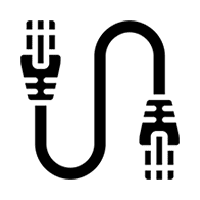 With each new iteration of OS X, Apple users expect to see features added to the operating system that make the Mac experience so much better. OS X 10.7, better known as Lion, is no different, and some of the new features are truly useful. While my last article covered my experiences in installing the latest Apple operating system, in this article I’ll be taking a closer look at the new features that I find quite useful. There are quite a few things that have been added to Lion, so I’ll be paring down my list to just include my favorites.
With each new iteration of OS X, Apple users expect to see features added to the operating system that make the Mac experience so much better. OS X 10.7, better known as Lion, is no different, and some of the new features are truly useful. While my last article covered my experiences in installing the latest Apple operating system, in this article I’ll be taking a closer look at the new features that I find quite useful. There are quite a few things that have been added to Lion, so I’ll be paring down my list to just include my favorites.
Thanks to Lion, your fingers will be getting a workout with Gestures; with the trackpad on your laptop or a Magic Trackpad, multi-touch gestures have been ramped up significantly. They work on the Magic Mouse too, but with it having a much smaller surface, the trackpad experience is the way to go. One big change that might cause some ruffled feathers is how multi-touch scrolling works: it is reversed. Apple did this to mimic how the iOS devices do scrolling, so it takes a little getting used to at first. For those who are resisting the change, you can alter the behavior in the System Preferences. I tried using the scrolling behavior both ways and became accustomed to the new method in a day; I now prefer it to the old way of scrolling.
Launchpad is the new way to open up applications, and it’s easily accessible by using a multi-touch gesture to bring it up. Like iOS, it features icons for all the programs installed on your computer. With the App Store being the central repository for Mac software, Lion is bridging the gap between the Mac and the iPhone, unifying the user experience. This new way to access your programs seems to be pushing users away from using the dock to launch an app, which fits in with the next feature.
Full-screen apps are being rolled out as the new way for you to interact with your programs. While parts of iLife (iPhoto, iMovie, and GarageBand) got the treatment in iLife ’11, Lion brings full-screen capabilities to Mail, Safari, Preview, iCal, and more. This new method of viewing your apps does away with the menu bar and the dock giving you the maximum value for your screen real estate. With a vast majority of Macs being laptops, smaller screens will really take advantage of this boost. Granted, it will be some time before all apps are capable to run in full-screen mode, but as with everything else, it’ll be the Apple way that wins before it’s all said and done.
Lion also brings some fail-safe devices into play with Auto-save and Versions, keeping your documents safe from accidental loss. Auto-save works with every app so that lost work is a thing of the past. What if a change is saved that you don’t want, and you’ve seemingly lost that brilliant paragraph you replaced? Lion comes to the rescue, keeping previous versions of your documents accessible for your retrieval, much like Time Machine works. Another feature I’ve been enjoying is Lion’s ability to resume your apps exactly as you left them. Close an app or reboot and next time you open it, everything is as you left it: palettes, documents, and more.
There’s a heck of a lot more to Lion than just the features I’ve briefly touched on here, but overall Lion is a great update to the Apple operating system. If you have a Mac running a dual-core Intel processor, I highly recommend you upgrade.

